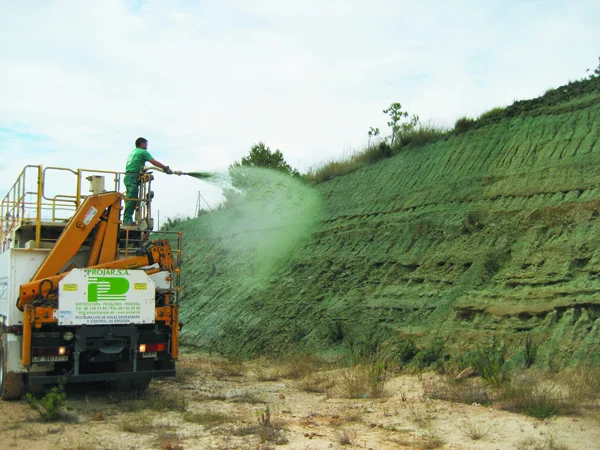
Hydroseeding is a revolutionary method for establishing lush, green landscapes with minimal effort and maximum results. Hydroseeding services offer an efficient and cost-effective solution for seeding large areas, controlling erosion, and promoting soil health. In this article, we’ll delve into the intricacies of hydroseeding, exploring its components, process, maintenance, and benefits to get hydroseeding services.
Introduction to Hydroseeding
Definition and Purpose of Hydroseeding
Hydroseeding, also known as hydraulic mulch seeding, is a seeding technique that involves spraying a mixture of seeds, mulch, fertilizers, and water onto the soil surface to establish vegetation. This process is commonly used for landscaping, reclamation, erosion control, and roadside stabilization projects.
Benefits of Hydroseeding over Traditional Seeding Methods
Hydroseeding offers several advantages over traditional seeding methods, including faster germination and establishment of vegetation, superior erosion control, and enhanced soil moisture retention. Additionally, hydroseeding allows for customized seed mixes and precise application, resulting in uniform coverage and optimal seed-to-soil contact.
Components of Hydroseeding Mix
Seed Selection
The success of a hydroseeding project depends largely on the selection of appropriate seed varieties. Different grasses, wildflowers, and vegetation species are chosen based on factors such as climate, soil type, sun exposure, and intended use of the landscaped area.
Mulch Additives
Mulch materials play a crucial role in hydroseeding by providing a protective cover for seeds and retaining moisture in the soil. Common mulch additives include wood fibers, paper, or straw, which break down over time to enrich the soil and enhance plant growth.
Fertilizers and Soil Amendments
To promote healthy plant growth, hydroseeding mixtures often include fertilizers and soil amendments that supply essential nutrients and improve soil fertility. These additives are carefully selected based on soil testing and analysis to ensure optimal nutrient levels for seed germination and root development.
Hydroseeding Process
Site Preparation
Before hydroseeding can commence, the site must be properly prepared by clearing vegetation, debris, and rocks, and grading the soil surface to ensure uniform seed distribution.
Mixing the Hydroseeding Slurry
In a hydroseeding tank, seeds, mulch, fertilizers, and water are mixed together to create a slurry with the consistency of thick soup. The mixture ratios are adjusted based on site conditions and seed requirements to achieve optimal coverage and germination.
Application of Hydroseeding Mixture
The hydroseeding slurry is then sprayed evenly over the prepared soil surface using specialized equipment. The spraying process ensures thorough coverage and uniform distribution of seeds and mulch, resulting in a dense and uniform stand of vegetation.
Care and Maintenance of Hydroseeded Areas
Watering Schedule
Watering is critical for the success of hydroseeding projects, especially during the initial stages of seed germination and establishment. Frequent and consistent watering is essential to keep the soil moist and promote healthy root development.
Weed Control
Weed management is another important aspect of maintaining hydroseeded areas. Selective herbicides may be applied to control weeds without harming desirable vegetation, while manual weed removal techniques can be used for larger infestations.
Fertilization and Soil Amendments
As the hydroseeded area matures, additional fertilizers and soil conditioners may be applied to promote plant growth and soil health. Soil testing and nutrient management are essential for determining the specific needs of the vegetation and ensuring optimal fertility levels.
Benefits and Applications of Hydroseeding
Erosion Control and Soil Stabilization
Hydroseeding is an effective method for controlling soil erosion on slopes, embankments, and construction sites, as well as establishing vegetation in environmentally sensitive areas.
Cost-Effectiveness and Efficiency
Compared to traditional seeding methods, hydroseeding offers lower labor and material costs, faster project completion times, and superior results in terms of seed germination and vegetation establishment.
Versatility and Adaptability
Hydroseeding is suitable for a wide range of soil types, terrains, and project sizes, making it a versatile solution for landscaping, reclamation, and erosion control projects of all scales. Customizable seed mixes allow for tailored solutions to meet specific project requirements and environmental conditions.
In conclusion, hydroseeding is a versatile and cost-effective solution for establishing vegetation, controlling erosion, and promoting soil health in a variety of landscapes and environments. By understanding the components, process, maintenance, and benefits of hydroseeding, homeowners and landscapers can achieve lush, green landscapes with minimal effort and maximum results


